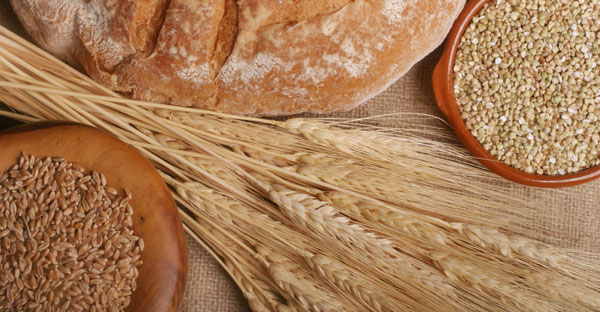

Whether the latest diet debate centers around gluten-free, Atkins or Paleo, carbs are a hot topic these days. The problem is, the discussions typically cluster all carbs into one category: “bad”, and thus all carbohydrate-rich foods, such as grains, are also labeled. The reasoning goes like this: all carbs, and therefore all grains, are unhealthy, fattening and strictly to be avoided, to the point where some shoppers will pay $10 a package for Paleo Wraps. The fallout of this oversimplification keeps a lot of us steering clear of a really important fiber and nutrient source.
Carbohydrates are the starchy and sugary parts of food that break down into glucose, the sugar your body needs for fuel. It’s important not to confuse the carbs in processed grain products with those contained in whole grains. Refined grains break down and enter the bloodstream quickly, which can cause unhealthy fluctuations, especially long-term. Whole grains that combine carbohydrates with lots of fiber keep blood glucose levels stable with a slow, sustained release pattern. Clearly not all grains are created equal.
Whole grains are also an important source of fiber, a key nutrient many of us are deficient in. The general fiber recommendation for adults is 25 grams per day, and the average American is currently coming in at around half of that. Whole grains such as oats, quinoa, bulgur, brown rice, and wheat berries, fall into the complex carbohydrate family, and have a more leveling effect on blood sugar and insulin than do foods like white rice or pasta. The fiber contained in complex carbohydrates, gives us the feeling of fullness that keeps us from overeating in addition to all the health benefits it offers. And researchers have linked high fiber consumption with a lower risk of both cardiovascular disease and type 2 diabetes.
Then there are the other kind—the simple or refined carbohydrates contained in white bread, white rice, pasta, pastries, crackers, most juices, and breakfast cereals. These are grains that started out whole, but then had the fibrous coating removed, so your body barely has to work to digest them. Refined carbs enter the blood stream in a surge, leading to a spike in insulin that leads to a kind of roller-coaster effect on blood sugar: way up, then way down. Insulin surges can create a cycle of hunger and overeating in the short term, and long-term are associated with weight gain, type 2 diabetes, and other health problems. To your body, refined grains like white rice are treated essentially the same way as a teaspoon of sugar: quick to convert to glucose, then leave you feeling hungry all over again.
Since most of us would benefit from increasing the fiber in our diets, you may want to think about making the switch to whole grains, the more intact the better. Look for bread that’s made with only 100% whole grains, like 100% whole-wheat bread, and limit even refined whole grain products to 1-2 servings per day.
Brown rice is better than white, but why not experiment with some delicious new alternatives? A dish that contains millet, wheat berries, hulled barley or bulgar can provide about ⅓ of your daily fiber requirement. Whole grains are also high in protein and other important nutrients like phytochemicals.
The less widely used grains offer an entire new experience in flavor and texture. From Quinoa Tabouli, Oven Baked Oats or Orange Fennel and Kamut salad, you’ll discover whole new favorites to replace those refined wheat products and fiber you up right!
Copyright 2024 Center for Nutrition Studies. All rights reserved.